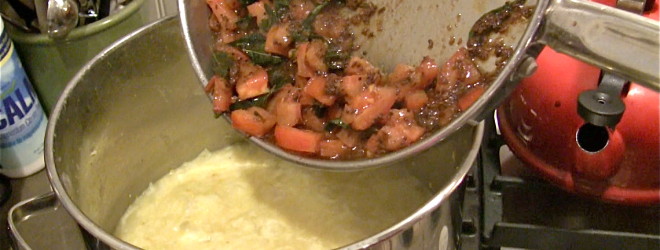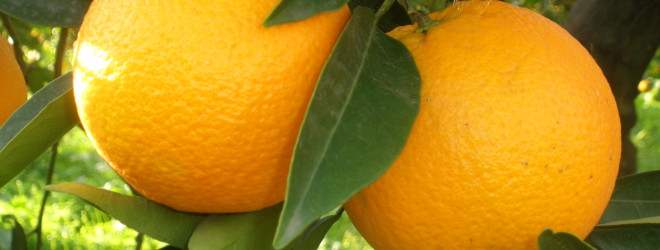The concept behind food as medicine is that food is a spectrum between nourishment and healing, and given the very large spectrum of foods, there many valid approaches to diet. But when we talk about diet, we need to understand the difference between a diet that nourishes, and a diet that heals. We need to understand how the different qualities of food impacts our health, for good and for ill. There is no such thing as a wrong food, with perhaps the exception of highly processed, refined foods, but only because they are biologically inappropriate (e.g. microparticles). But almost all other foods in varying amounts are good for us – but how do we figure this out?
“Given the obvious complexity of food, and the resultant ignorance and confusion that typically follows, most of us end up eating foods that aren’t very good for us. Ayurveda is a useful tool that cuts to the heart of the matter, not through the cold calculation of precise mechanisms and measurements, but through a naturalistic approach that actually matches our human experience. The reason why modern nutrition falls short is because it is based upon a model that is alien to the very nature of how we experience food. Clearly we need to have a way to understood food that makes sense and is easy to understand. Ayurveda shows us that through a qualitative approach we gain an excellent awareness of the nature of food, providing us with a set of basic tools we can use to protect and sustain good health.”
In Ayurveda there are three sets of qualities that generally describe all interaction. These are hot/cold, heavy/wet and dry/light. Each of us are affected by these influences – either that or they are in perfect equilibrium so we can’t tell the difference, or we are dead. These six factors form a three dimensional model of qualitative interaction. Very clearly, each of us are affected by these qualities in different ways. For example, while we are all affected by cold, dry weather, some people are affected more powerfully. Their skin becomes dry and sore, and they can never get warm. And while we all like a nice summer day, some people get too hot and itchy, or it makes their eyes sore and gives them a headache. We are all different, not just because we were born that way, but because we are constantly changing. In Ayurveda, they are expressed as a balance of the three doshas:
- vata is dry, cold and light
- pitta is hot, light and wet
- kapha is heavy, cold and wet
While most people think of the doshas as it relates to their body type, this is only one small part. In my book I describe that:
“…Kapha, pitta and vata represent the dynamic of change, the ceaseless cycle of birth, life and death that all living beings must undergo. It is a cycle that is replicated on many levels. In the seasons, kapha relates to the emergence of spring after the death of winter, when life is born in the newly green earth, excited by the warm sun that melts the nourishing mountain snow. Pitta relates to summer when the fire element reaches its maximum and the brilliance of the sun calls forth the full blossoming of life, resplendently radiant and powerful. Vata relates to autumn, when the sun begins its slow descent on the horizon towards winter and death, the energy returning to its roots, to the substratum of life, to be called forth again next spring. The daily rhythm reflects this universal cycle as well, with morning relating to kapha, midday to pitta, and vata the late afternoon. In the same way, the first part of the evening corresponds to kapha, midnight with pitta, and vata with early morning before sunrise. Not just the seasons, but our very lives also follow this cycle, with childhood manifesting the softness and sweetness of kapha, pitta the blossoming of full maturity, and vata the slow retreat of aging.”
Clearly everybody is different. Recently Christy Kennedy Zamboni asked me why some people appear to do well on the vegan diet. But before I answer her, I would like to say that I use all types of diets in my practice, including one that might seem very similar to a raw vegan diet. Nonetheless, I am very practical in my approach, because Ayurveda is very practical. In essence, there are no wrong or right foods, but there are wrong and right ways to apply them. And in my opinion, the assumptions of a raw vegan diet are unsupportable and unsustainable for most people, even if the food itself can be very healing. How is that possible? As I say in my book:
“A vegan diet however is not without benefits, and can be a useful therapy to restore health, particularly in a society where over-consumption is the norm. Some clinical research has shown that a vegan diet is useful to control obesity and diabetes, although it may compare unfavorably to more satiating high-fat and protein-rich diets that similarly promote weight loss and a reduction of associated risk factors. Perhaps the true benefits of a vegan diet may be in its ability to reduce the body burden of toxic compounds such as organochlorines and other toxic compounds that bioaccumulate in animal products (see p. 45). From a traditional medical perspective a vegan diet is effective to reduce congestion (kapha), inflammation (pitta) and autotoxicity (ama), and may be very helpful when undertaken as part of a short-term detoxification program (p. 205) in the treatment of chronic disease. A vegan diet however is contraindicated in deficiency states (vata), marked by conditions including weight loss, fatigue, infertility, osteoporosis and immune dysfunction.” (references removed)
But is a long term vegan diet safe? As a healing diet, people that have an excess of congestion (kapha) and heat (pitta) could do well on such a diet, particularly if they lived in a sunny climate. But for how long we don’t know because there is no multigenerational evidence of strict raw food veganism. Probably men will fare better on a vegan diet than women, simply because they aren’t losing blood, iron and nutrients every 28 days or so. They aren’t growing fetuses in their belly and then feeding them with their breasts sometimes for several years. Many men (and some women) could probably benefit from a raw vegan diet, particularly if they have hemochromatosis. But I still can’t help but noticing that all the big vegan gurus are men – men telling women what they should eat. It has a cultic, paternalistic element to it that doesn’t seem real. For me the leaders of this movement are ideologues because they do not represent the interests of everyone. In my article, Busting some myths about raw food veganism I provide very clear evidence that a long term raw food vegan diet could be very problematic in both women and children, and this has to be at least 75% of the world’s population… so no, raw food veganism isn’t a sustainable diet for everyone.
Most of the raw food vegans I see are young and idealistic. Very few of them have hit 40 to feel the gradual decline of age. They don’t know their bones haven’t achieved peak density, they don’t know what it will feel like after a decade of raw food veganism. So they are experimenting. And that’s fine, so they should – we all do to some extent. But I am on a harm-reduction program. I say the raw food vegan perspective is very short term, and I suggest, this is its best application – as a short term diet. Some people may appear to do well on a raw food vegan diet for very long periods, but the evidence falls short that they are not just an anomaly. Yes, there are a few examples of young, mostly male athletes apparently doing well on a raw food vegan diet, but these people do not represent an average cross-section of society, and nor do we know all the details of their lives. Individuals can be the exception, but they are not the rule. We need an approach to diet that speaks with maturity to the needs of everyone. It is time to get past the dogma of eating. And this is why I wrote my book, Food As Medicine.




